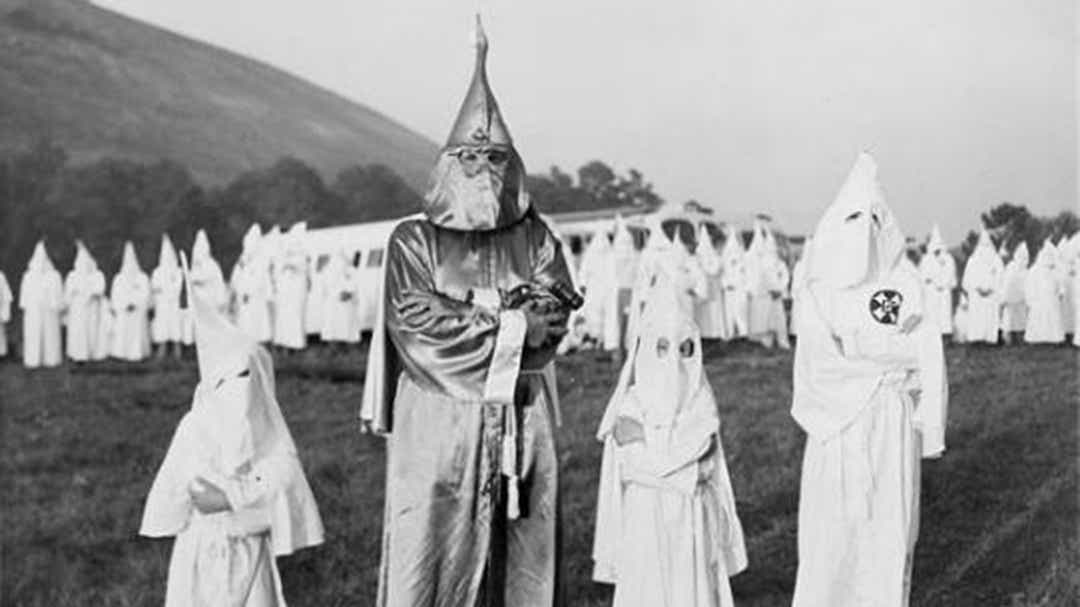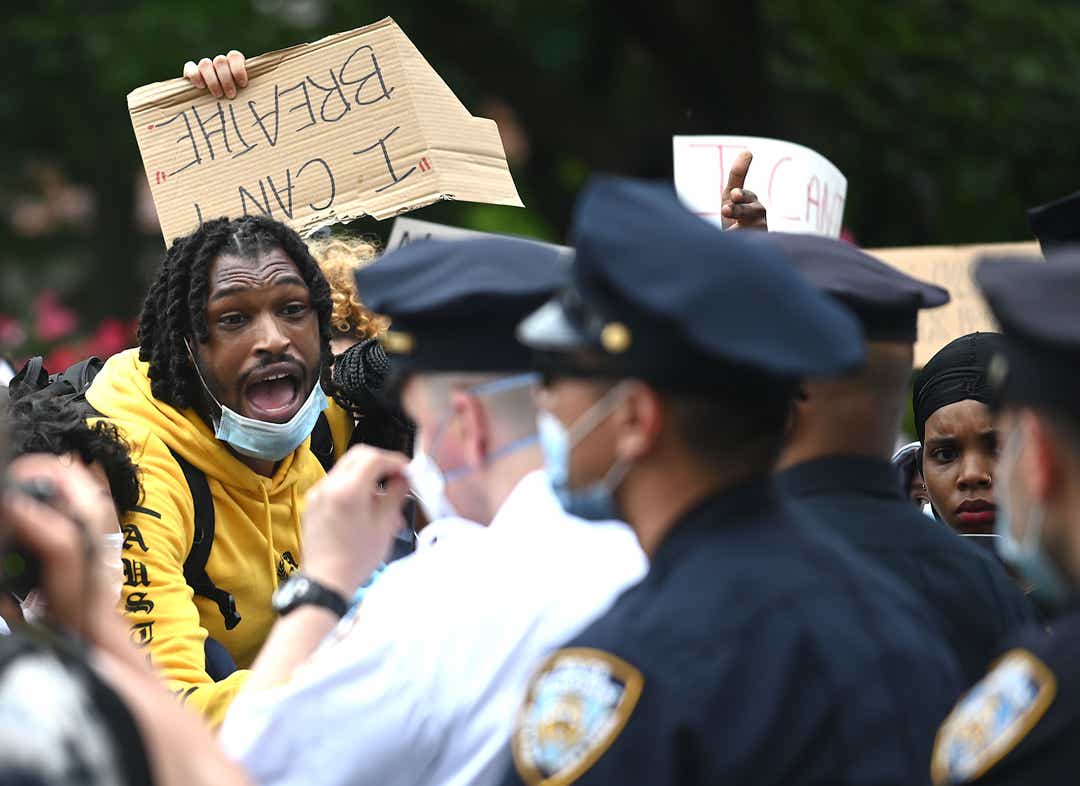There was no place to hide, no place to truly be safe. Across the U.S., black Americans lived in fear of law enforcement officials armed with weapons who monitored their every behavior, attacked them on the street and in their homes, and killed them for the slightest alleged provocation.
These organized groups of white men known as slave patrols lay at the roots of the nation's law enforcement excesses, historians say, helping to launch centuries of violent and racist behavior toward black Americans, as well as a tradition of protests and uprisings against police brutality.
That history has once again become the subject of national debate as millions of Americans in recent days gathered in cities large and small to denounce police brutality and racial bias after the death of George Floyd, a 46-year-old black man in Minneapolis, Minnesota, killed by a police officer after allegedly using a counterfeit $20 bill at a convenience store.
In a video of the encounter, Floyd gasped for breath as police officer Derek Chauvin kneeled on his neck while three other officers looked on. Chauvin was fired along with the officers in the video, and all four were eventually arrested for their role in his death. Floyd’s last words were, “I can’t breathe,” recalling the death of Eric Garner, 43, who also gasped “I can’t breathe" before he was killed during an arrest for selling untaxed cigarettes in New York City in 2014.
Both deaths, as well as the deaths of other black men, women and children across the U.S. during interactions with police officers, have inspired protests and calls for police reform, along with the rise of the Black Lives Matter social justice movement.
But law enforcement officials across the U.S. have a much longer history of killing black people, says Jennifer Cobbina, a criminal justice professor at Michigan State University.
“Too often people look at the contemporary issue, the issue that is going on right now but not understanding that all that is happening is seeped in 400 years of legacy of injustice,” she says, adding, “These past grievances, past harms by law enforcement, need to be addressed before even attempting to move forward.”
Dating back to the 1600s, the U.S., then a British colony, used a watchmen system, where citizens of towns and cities would patrol their communities to prevent burglaries, arson and maintain order. As the slave population increased in the U.S., slave patrols were formed in South Carolina and expanded to other southern states, according to Sally Hadden, a history professor at Western Michigan University who researches slave patrols.
Slave patrols were tasked with hunting down runaways and suppressing rebellions amid fear of enslaved people rising up against their white owners, who were often outnumbered. The patrol was a volunteer force consisting of white men who surveyed and attacked black people and anyone who tried to help them escape.
“Everything that you can think of that a police officer can do today, they did it,” says Hadden. “The biggest thing is that they were race-focused as opposed to the police today, who should be race neutral in their enforcement of law.”
Slave patrols were not designed to protect public safety in the broadest sense but, rather, to protect white wealth, says Seth Soughton, a law professor at the University of South Carolina School of Law and a former police officer in Tallahassee, Florida, whose research has focused on excessive police force.
After the abolition of slavery in 1865 with the passing of the 13th Amendment toward the end of the Civil War, slave patrols were done away with and modern police departments become more common.
African Americans, however, were still heavily policed by law enforcement officials, especially in areas that passed black codes, or laws that restricted property ownership, employment and other behaviors.
The Ku Klux Klan and other hate groups terrorized black communities, carrying out lynchings and destroying black schools. Some law enforcement and other government officials became KKK members, especially in the South.

“The Ku Klux Klan could often count on empathy or active assistance at the time,” says Soughton. "The best that can be said for a lot of policing at the time is that they didn’t do anything to stop that. But often there is far worse to say because not only did they not do anything to stop it, they actively assisted it.”
When black Americans protested against segregation and other racist laws, law enforcement officials were often called in. During the civil rights era, images of police brutally suppressing peaceful activists, including with the use of dogs and fire hoses, in part helped usher in the Civil Rights Act of 1964, which outlawed discrimination on the basis of race, color, religion and sex.

But as black Americans gained more rights, lawmakers on both sides of the political aisle looked for ways to criminalize the black community.
In 1971, the Nixon administration launched the war on drugs, resulting in increased arrests and harsher prison sentences largely aimed at black people. Former Nixon domestic policy chief John Enhrlichman later confirmed that the effort was designed to hurt black families.
"We could arrest their leaders, raid their homes, break up their meetings, and vilify them night after night on the evening news," he told Harper's Magazine.
The Clinton administration's 1994 crime bill also resulted in many more black Americans being rounded up by law enforcement officials and put in prison.
From 1980 and 2015, the nation's prison population climbed from roughly 500,000 to over 2.2 million, with black Americans making up 34% of all inmates, according to the NAACP. Only 13% of Americans identify as black, according to the U.S. Census.

And black people are still experiencing police brutality and dying because of it. According to the research group Mapping Police Violence, African Americans are 2.5 times more likely to be killed by a police officer than a white person.
In 2012, George Zimmerman, a neighborhood watch coordinator, was acquitted for the shooting death of Trayvon Martin, a 17-year-old student in Sanford, Florida. The verdict, along with the 2014 police shooting of Michael Brown, an 18-year-old black man in Ferguson, Missouri, gave birth to the Black Lives Matter social justice movement and protests over police brutality.
After the election of President Donald Trump in 2016, the Justice Department curtailed programs to investigate local police departments for racism and excessive force. But the recent deaths of Floyd, as well as of Breonna Taylor, a 26-year-old African American emergency room technician in Louisville, Kentucky, killed at her home in March by police searching for a suspect in a drug case, have sparked renewed protests over law enforcement actions and policies.
Republican and Democratic lawmakers alike have decried Floyd's killing, and Americans of all ethnic backgrounds have poured into city streets demanding justice for Floyd, Garner, Taylor and many others.
“What’s becoming very apparent is that black people aren't the only group in this country that is concerned about the levels of police brutality in the United States,” says Lionel Kimble, a history professor at the University of Iowa whose research focuses on black civil rights. “The country is going to have to take a hard look in the mirror and talk about how we police people, in what role the police play in supporting inequality in our society.”
U.S. - Latest - Google News
June 07, 2020 at 02:15PM
https://ift.tt/3cJwxnk
Not just George Floyd: Police departments have 400-year history of anti-black racism - USA TODAY
U.S. - Latest - Google News
https://ift.tt/2ShjtvN
Shoes Man Tutorial
Pos News Update
Meme Update
Korean Entertainment News
Japan News Update
Bagikan Berita Ini















0 Response to "Not just George Floyd: Police departments have 400-year history of anti-black racism - USA TODAY"
Post a Comment